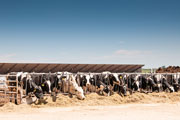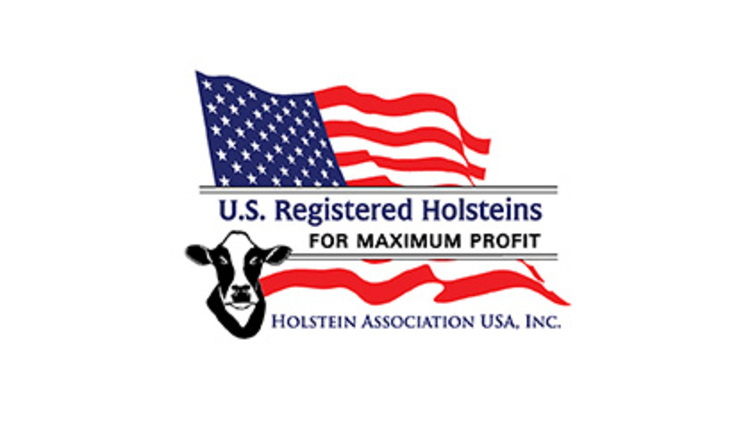
"We want dairy cows to be superior athletes in the milking string, however the transition period requires cows to go from zero to 60 miles per hour in a very short amount of time,” said David Festa, DVM, Boehringer Ingelheim. “Due to metabolic demands placed on cows during this period, they are more likely to be affected by a multitude of early-lactation diseases that inhibit productivity.”
Early-lactation diseases account for considerable economic losses for dairy producers, through both direct and indirect costs. In fact, a single case of mastitis during the first 30 days in milk is estimated to cost producers $444.1
Around 30% of this price tag comes from direct costs at the time of disease occurrence. However, the majority of costs associated with early-lactation diseases like mastitis are considered indirect, and which can include future milk production losses, premature culling, replacement losses and future reproductive losses.1
To ensure cow health and optimal performance, Dr. Festa provides management advice for three critical time periods:
1. Prior to calving
“Properly managing the dry cow and close up pens is the best way to ensure cows are prepared to meet the metabolic demands placed on their body both during dry period and post calving,” said Dr. Festa.
Key management practices leading up to calving include optimizing cow comfort and minimizing stress by ensuring adequate stocking densities and feed bunk space, providing comfortable bedding, installing cooling systems, limiting pen moves and maintaining a clean environment. Dry cows also need a sufficient amount of protein, vitamins and minerals in their diet to meet nutritional requirements.
If transition cow health is unsatisfactory in your herd, Dr. Festa recommends working with a local veterinarian and nutritionist to review your close-up pen management. Regular herd health checks with your herd veterinarian can help you identify areas needing improvement and adjust protocols accordingly.
2. Post calving
Immediately after calving, cows must adjust to the high levels of calcium loss through colostrum and subsequent milk production. During this time, it can be difficult for a cow to maintain calcium balance — predisposing her to fresh cow diseases.
“The goal is to help the cow maintain consistent calcium levels so that she can get up on her feet, and back on quality feed, so we can maximize her milk production,” Dr. Festa emphasized.
To reduce the risk of diseases like hypocalcemia or milk fever, producers are encouraged to administer an oral calcium supplement to cows at calving, and again 12 hours later. This practice provides much-needed calcium to fresh cows when blood calcium levels may be depleting or are at their lowest.
Another way to help manage calcium levels is through a negative dietary cation-anion difference (DCAD) diet. Studies have shown a well-formulated negative DCAD ration results in increased dry-matter intake in early lactation, increased milk production, decreased disease incidence, fewer displaced abomasums and improved reproductive performance.2
3. When a case of mastitis occurs
No matter how many strategic protocols you put in place, cases of mastitis will still occur occasionally. By detecting disease and other problems early, producers can make informed treatment decisions.
Dr. Festa explained, “Identifying the type of mastitis cows are developing through culturing will help you select an appropriate treatment, and can also help you develop strategies to combat mastitis-causing bacteria found in your cows’ close-up or maternity environments.”
It is important to note that studies have shown most mild to moderate Gram-negative mastitis cases, including E. coli, will spontaneously cure without antibiotic treatment.2 Of course, there are cases of mastitis that do require treatment. With targeted treatment, producers will see a better response to infections caused by Gram-positive pathogens. When dealing with an infection likely to respond well to treatment, Dr. Festa recommends using short-duration mastitis therapy to eliminate the infection and reduce the length of time cows spend in the hospital pen.
How the cow handles the stress associated with calving and moves through the transition period influences her production, health, ability to become pregnant again, and ability to remain in the herd. Be sure to work with your local veterinarian to develop prevention and treatment protocols that reduce the risk of diseases occurring during lactation to improve herd health and performance.
About Boehringer Ingelheim's Animal Health Business
Boehringer Ingelheim is the second largest animal health business in the world, with net sales of almost $4.7 billion (3.9 billion euros) worldwide in 2018, about 10,000 employees and a presence in more than 150 markets. The company has pioneered advancements in vaccines, parasite-control products and therapeutics that limit pain and slow disease, and aims to create the future of animal wellbeing for pets, horses and livestock by focusing on prevention.
Boehringer Ingelheim’s Animal Health Business has a significant presence in the United States with more than 3,000 employees in places that include Georgia, Missouri, Iowa, Minnesota, New Jersey and Puerto Rico. To learn more, visit www.boehringer-ingelheim.us, www.facebook.com/BoehringerAHUS or www.twitter.com/Boehringer_AH.

Boehringer Ingelheim
Improving the health of humans and animals is the goal of the research-driven pharmaceutical company Boehringer Ingelheim. The focus in doing so is on diseases for which no satisfactory treatment option exists to date. The company therefore concentrates on developing innovative therapies that can extend patients’ lives. In animal health, Boehringer Ingelheim stands for advanced prevention.
Family-owned since it was established in 1885, Boehringer Ingelheim is one of the pharmaceutical industry’s top 20 companies. Some 50,000 employees create value through innovation daily for the three business areas: human pharmaceuticals, animal health and biopharmaceuticals. In 2018, Boehringer Ingelheim achieved net sales of around 17.5 billion euros. R&D expenditure of almost 3.2 billion euros corresponded to 18.1 per cent of net sales.
As a family-owned company, Boehringer Ingelheim plans in generations and focuses on long-term success. The company therefore aims at organic growth from its own resources with simultaneous openness to partnerships and strategic alliances in research. In everything it does, Boehringer Ingelheim naturally adopts responsibility towards mankind and the environment.
More information about Boehringer Ingelheim can be found on www.boehringer-ingelheim.com or in our annual report: http://annualreport.boehringer-ingelheim.com.
References:
1 Rollin E, Dhuyvetter KC, Overton MW. The cost of clinical mastitis in the first 30 days of lactation: an economic modeling tool. Prev Vet Med 2015;122(3):257–264.
2 Caixeta L. Prevention and treatment of milk fever. University of Minnesota Extension. 2019. Available at: https://extension.umn.edu/dairy-animal-health-and-comfort/hypocalcemia. Accessed February 19, 2020.


